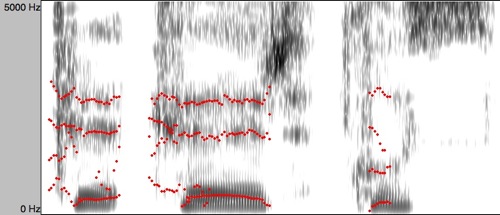Le FOOT vowel
 I was teaching phonetics to M.A. Linguistics students at University College London when something interesting happened.
I was teaching phonetics to M.A. Linguistics students at University College London when something interesting happened.
I pointed out the close similarity of the English FOOT vowel to “French schwa”, the vowel of le, de, je, ne, que, ce, me, etc. (“French schwa” is more rounded and higher than the mid central [ə] of English; the most accurate IPA symbol for it is [ɵ].)
Immediately there was a protest from one of my students, who happened to be French. She said that I couldn’t be right; if I were, “then [bʊk] would be pronounced [bɵk]!” At which point the other students burst into laughter. For the first time, she’d pronounced book the way they did.
Of course there’s a simple explanation for why she’d been using a different vowel from the native speakers around her. Instead of talking like them, she’d been talking like a dictionary. So instead of using the vowel of French le, [ɵ], she’d been using the vowel of German kaputt, [ʊ], which is what dictionaries recommend.
This, by the way, took place twelve years ago; those M.A. students are all now thirtysomethings or older, and their FOOT vowel is even more established as standard BrE. Here, courtesy of Google Translate, are French que, English could, and German Kuss. The first two have the same auditory vowel quality and the same formants (shown by red dots); while the German vowel quality and formants are very different indeed:

I see two problems in the established phonetic descriptions of the FOOT vowel. One is the conservatism of the widely used [ʊ] symbol: it encourages learners, who tend to be young, to sound very old-fashioned. (Though of course the German kaputt vowel is the right one if you want a North of England accent, or an Australian accent.)
Secondly, when the actual current pronunciation is described, it’s done in an uninsightful, unhelpful and/or vague manner. The contemporary FOOT vowel is described as [ʊ̟], or as exhibiting “FOOT fronting”, or “ʊ” is depicted as having moved in the vowel space. I think of this as “diacriticism”, by analogy with sexism, ageism, etc.: the preferred system is permitted a description with basic phonetic symbols, while other systems are described in terms of deviations and qualifications. In this case, of course, the preferred system is traditional RP – despite the fact that [ʊ], along with other RP vowels, is now very much on the… back FOOT.
Phonetic description should indicate when speech sounds are different, and when they’re essentially the same. I think phoneticians, who are trained to perceive fine differences, may sometimes be less interested in noting similarities. But such similarities are theoretically interesting and practically useful, for teaching. “French schwa” makes a rather handy cross-linguistic reference point for the English FOOT vowel.

